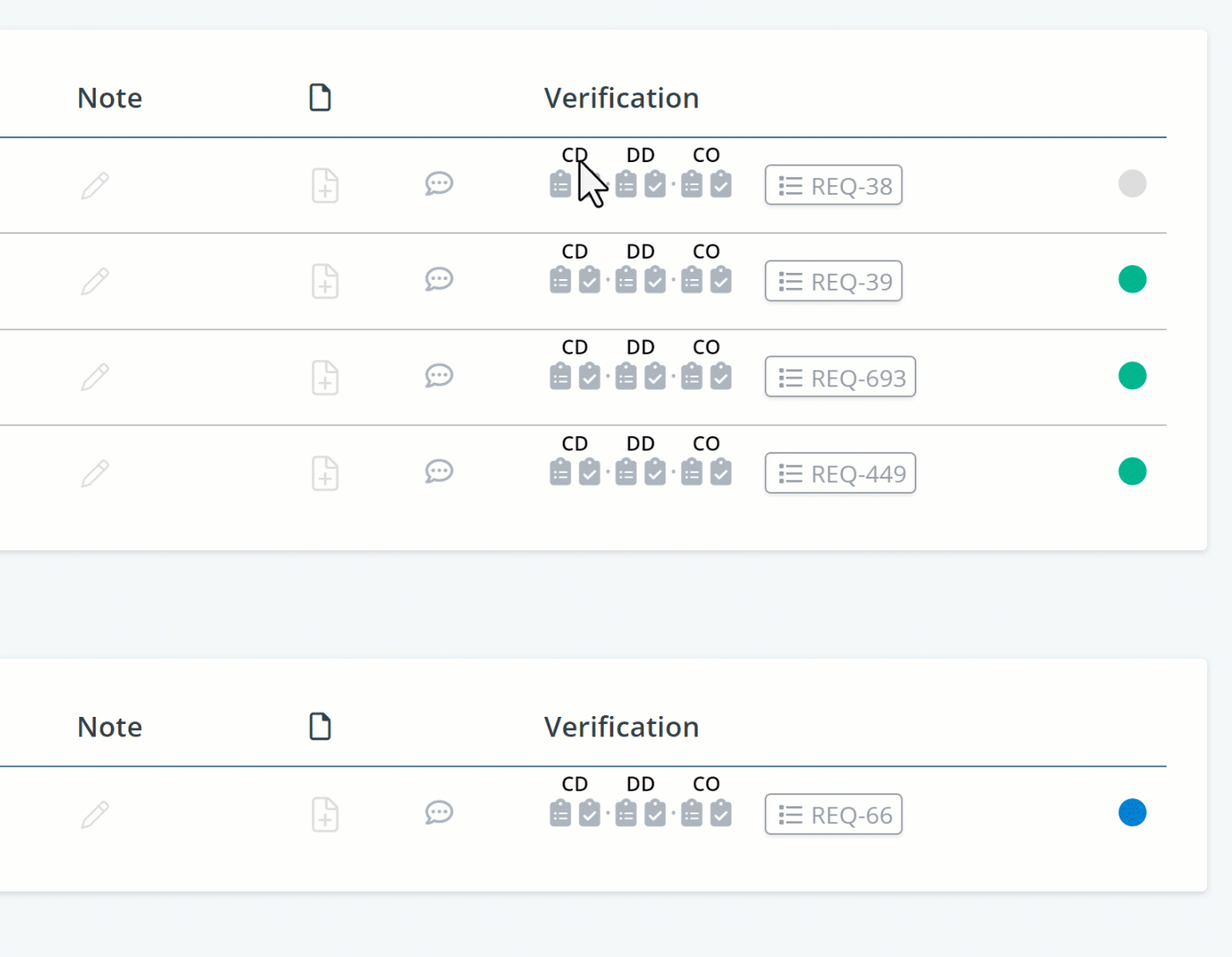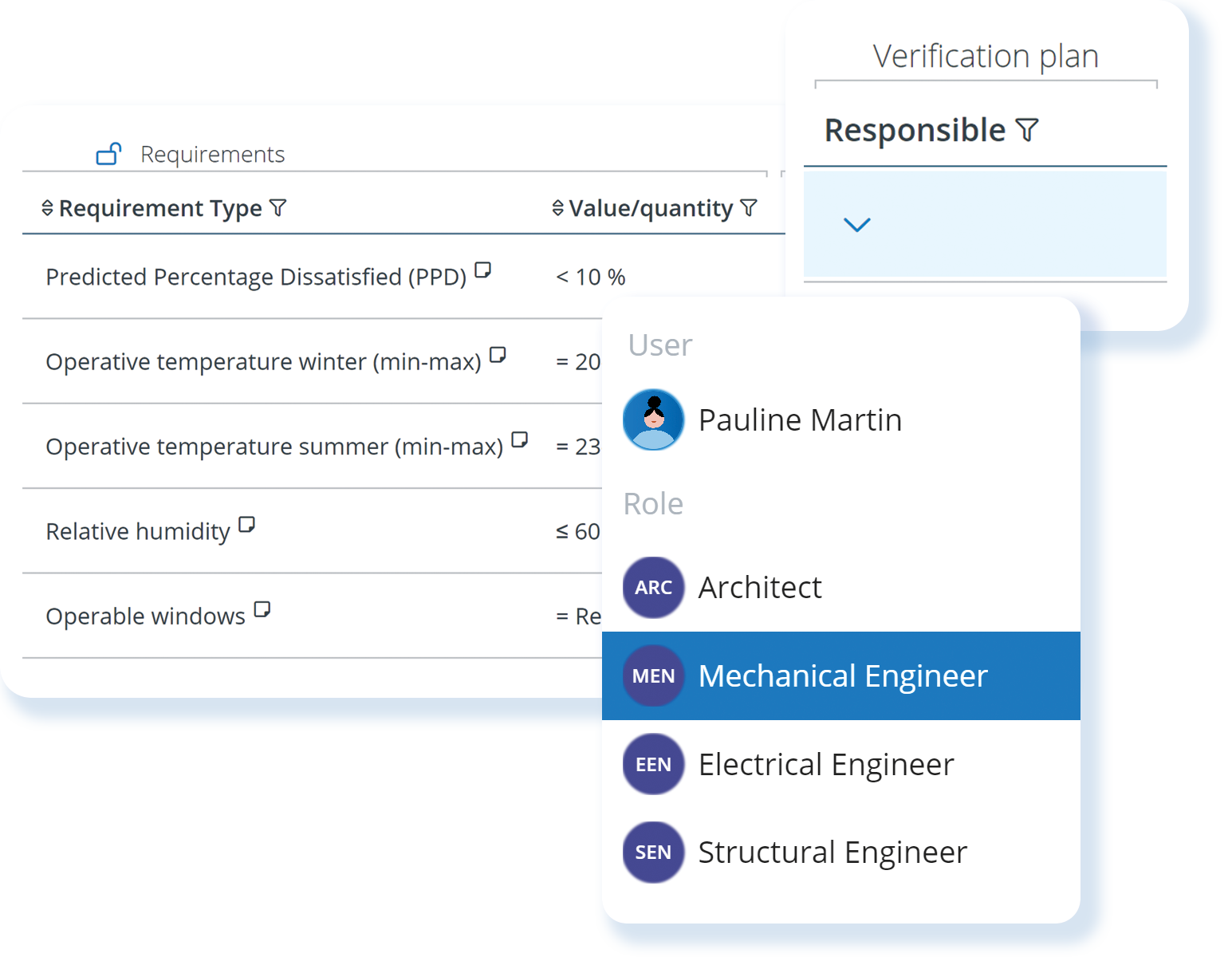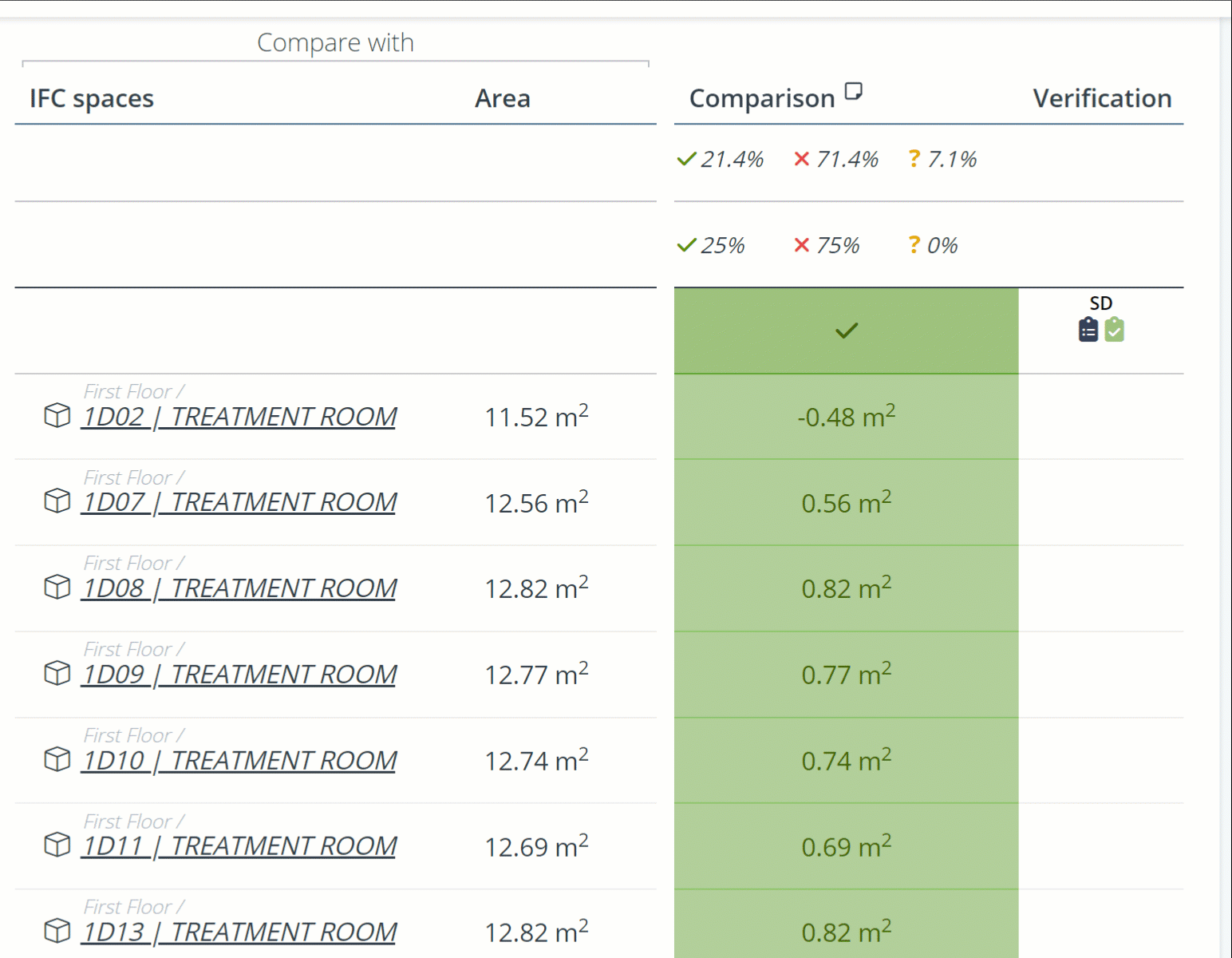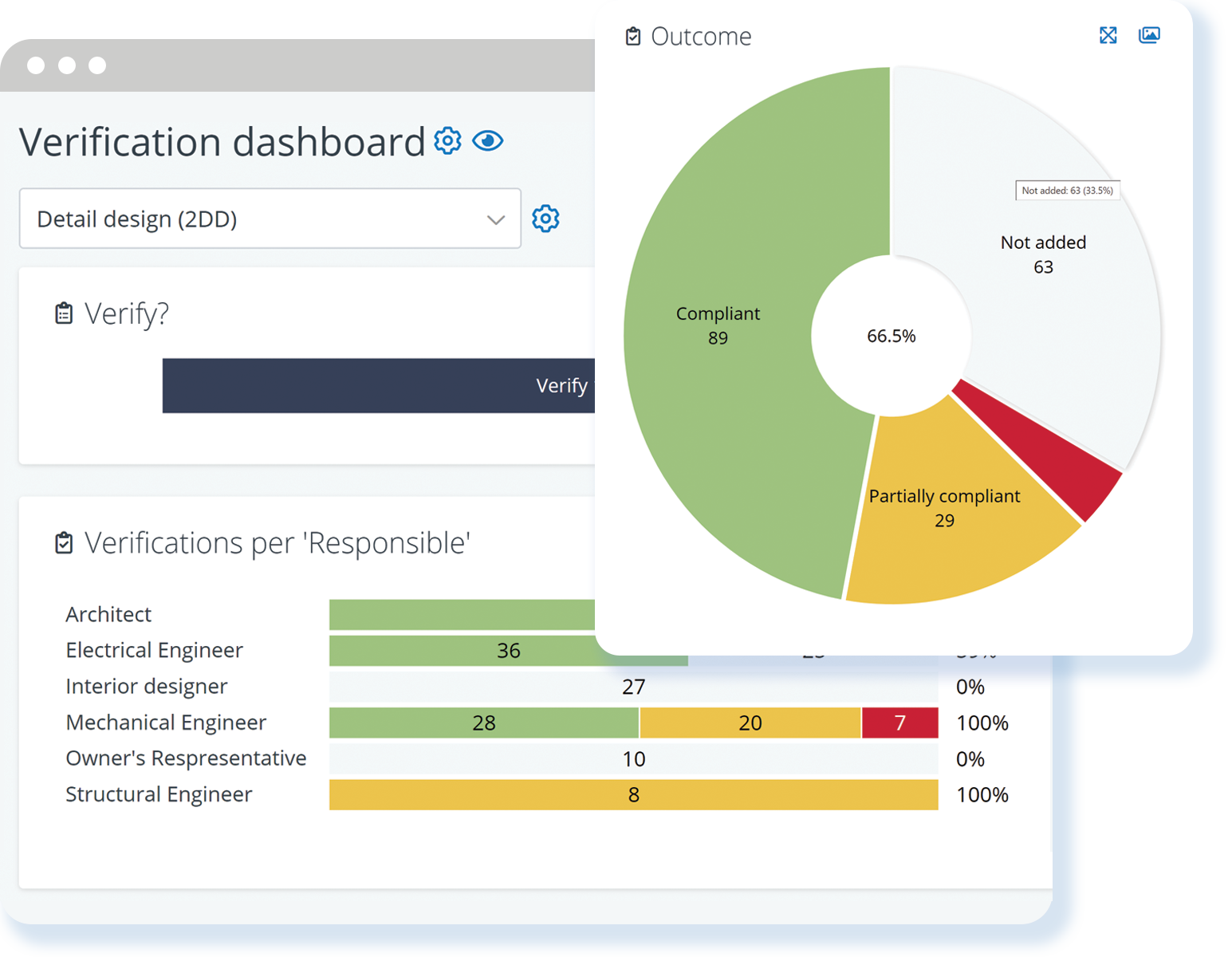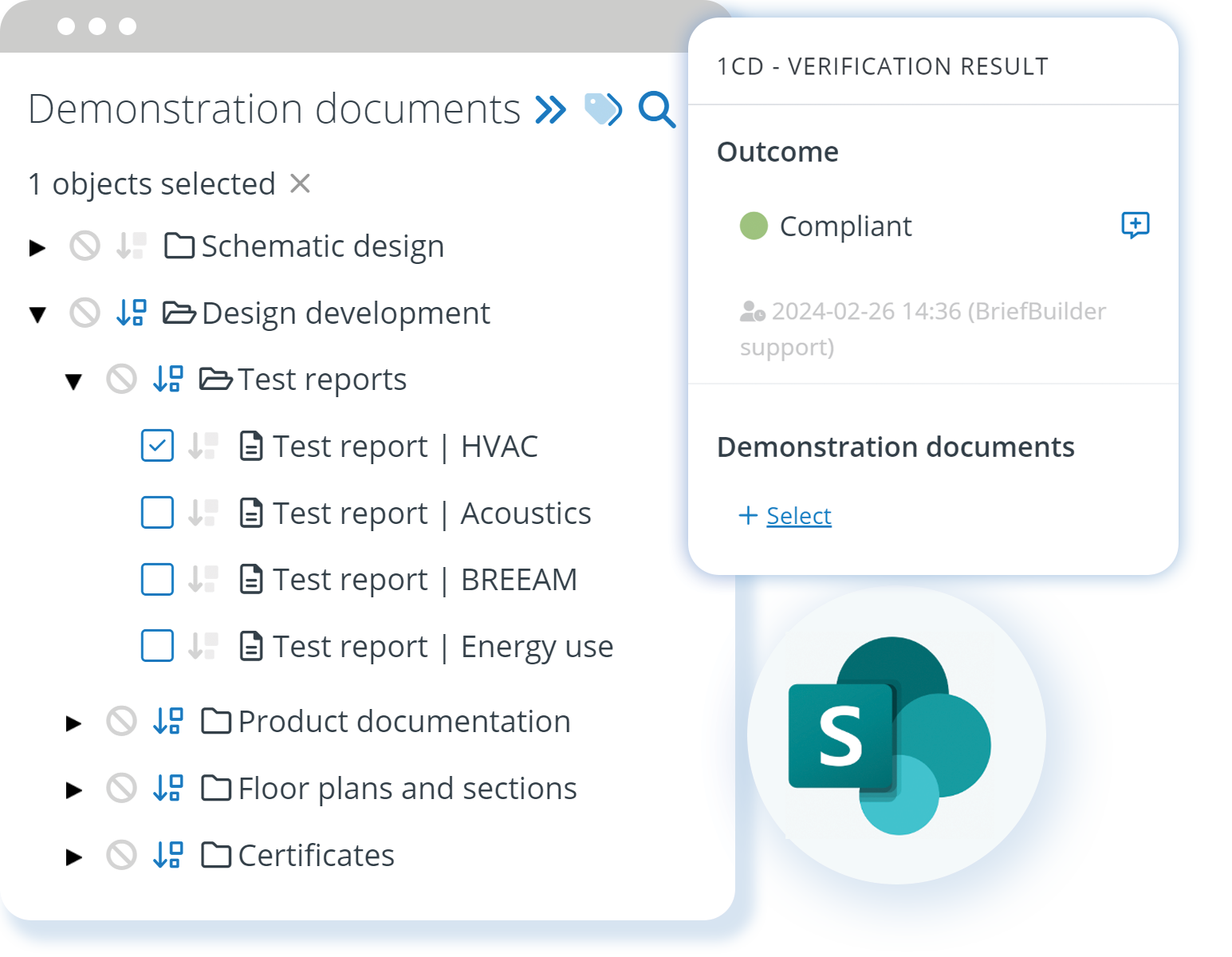Verification is about ensuring that project outcomes are compliant with the agreed requirements. BriefBuilder enables you to streamline the verification process, manage approvals and capture the related documentation.
Verification / compliance
Frequently Asked Questions
Verification is the process of checking whether a design solution, product, or process meets the set requirements. Related terms are commissioning, design testing and compliance testing.
By taking a systematic approach to verification, you can avoid that requirements being overlooked or ignored during the design process. It helps to ensure that the project’s outcomes will be compliant with the agreed requirements and in line with the owner’s and users’ needs.
A verification plan (sometimes also referred to as a test plan, control plan or commissioning plan) is a plan that explains how you will organize the verification process to demonstrate compliance with the defined requirements.
A verification plan covers the following questions:
- Which requirements will be verified?
- When will requirements be verified?
- How will they be verified?
- By whom will they be verified?
The verification plan can be made by either the construction client or the contract party (contractor /design/engineering team). In the latter case, the verification plan usually has to be approved by the client before it is executed.
In BriefBuilder you can streamline verification processes by:
- Capturing all the requirements that the project must comply with.
- Developing verification plans that explain when and how compliance should be verified.
- Assigning verifications to the relevant disciplines/project participants.
- Capturing verification outcomes, including documentation such as test reports or product certificates.
- Adding assessments or approvals of the verification outcome (‘four eyes’ principle).
For building projects, it is possible to test IFC models automatically against specific spatial requirements (i.e. room sizes, room quantities, ceiling heights). Other verifications will require dedicated tooling outside of BriefBuilder. Things like energy use or indoor climate will for example require dedicated test software. All test outcomes, however, can be brought together in BriefBuilder to give the client a clear overview of the overall compliance rate.

